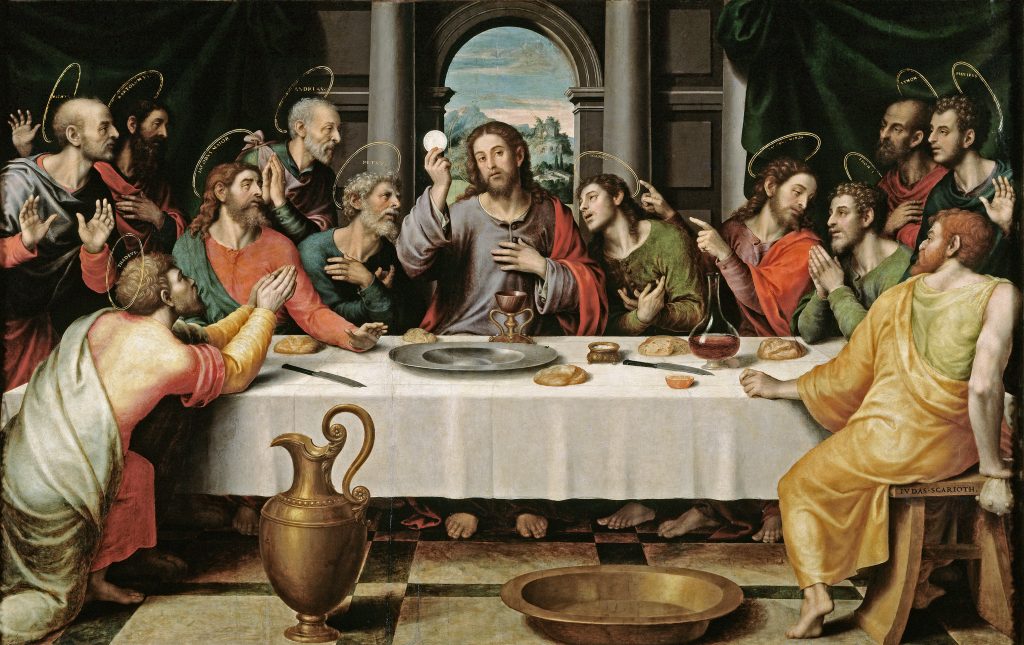
Lesson Objectives
- To read the New Testament with understanding.
- To understand how the New Testament depicts Jesus as the fulfillment of the covenants of the Old Testament.
- To appreciate, especially, the importance of God’s everlasting covenant with David for understanding the mission of Jesus and the Church as it is presented in the New Testament.
VI. Study Questions
1. Explain the four Old Testament references in the first line of the New Testament (seeMatthew 1:1). Why do we say that this line could stand as a summary of the entire Gospel?
2. What does Mary mean when she says the Christ Child fulfills God's "promises to our fathers, to Abraham and to his descendants forever" (see Luke 1:55).
3. How does the New Testament present Jesus as the promised Davidic Messiah in (a) His birth and early years; (b) His Baptism; and (c) His public ministry? Provide examples and quotations from Scripture.
4. How does the New Testament present Jesus as a new Moses in (a) His birth and early years; and (b) in His temptation in the wilderness?
5. How is Jesus' death and resurrection a new exodus and a new passover? In what way is the Eucharist a memorial of this new passover and exodus?
6. Explain the similarities between Abraham's "sacrifice" of Isaac and the Crucifixion of Jesus. How does the event of the Cross fulfill God's promise to Abraham?
7. When and how did Jesus teach the Apostles how to interpret the Old Testament Scriptures?
8. How does the New Testament present the Church as the restored Kingdom of David and a worldwide family of God?
Other Lessons
- Lesson One: The Master Key that Unlocks the Bible
- To learn the "big-picture" overview of the Bible - the story that the Bible tells.
- To understand the concept of "covenant" and its importance for reading and interpreting the Bible.
- To learn in general detail the six major covenants in the Bible.
- Lesson Two: From Sabbath to Flood
- To read Genesis 1-12 with understanding.
- To learn the meaning of the first two covenants of salvation history - the Sabbath, and the covenant made with Noah.
- To begin to understand the "patterns" of biblical history.
- Lesson Three: Our Father, Abraham
- To read Genesis 12-50 with understanding.
- To understand God’s covenant with Abraham and to see how that covenant is fulfilled in the New Covenant of Jesus Christ.
- To appreciate key figures and elements in the Abraham story - Melchizedek, circumcision, the sacrifice of Isaac - as they are interpreted in the Church’s tradition.
- Lesson Four: The First-Born Son of God
- To read the Books of Exodus, Leviticus, Numbers, and Deuteronomy with understanding.
- To understand God’s covenant with Israel at Sinai and to see how this covenant looks forward to and is fulfilled in the New Covenant of Jesus Christ.
- To appreciate the key figures and events - Moses, the Passover, and the vocation of Israel as “a kingdom of priests” - as they are interpreted in the Church’s tradition.
- Lesson Five: A Throne For All Generations
- To finish reading the Old Testament (from Joshua to Malachi) and to read with understanding.
- To understand the broad outlines of the history of Israel in light of God’s covenant with Abraham.
- To appreciate the crucial importance of God’s everlasting covenant with David.

